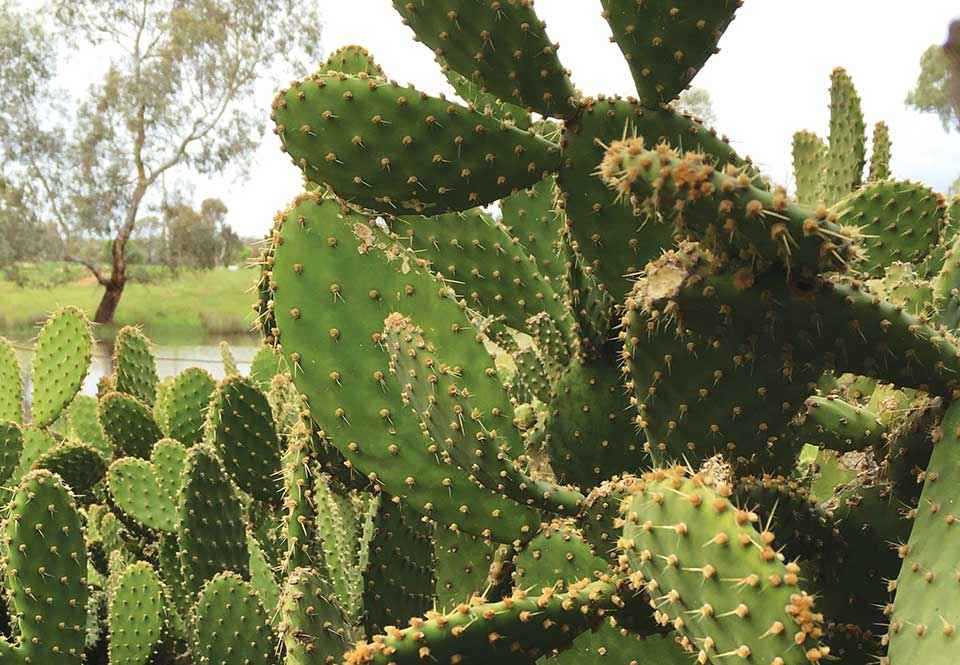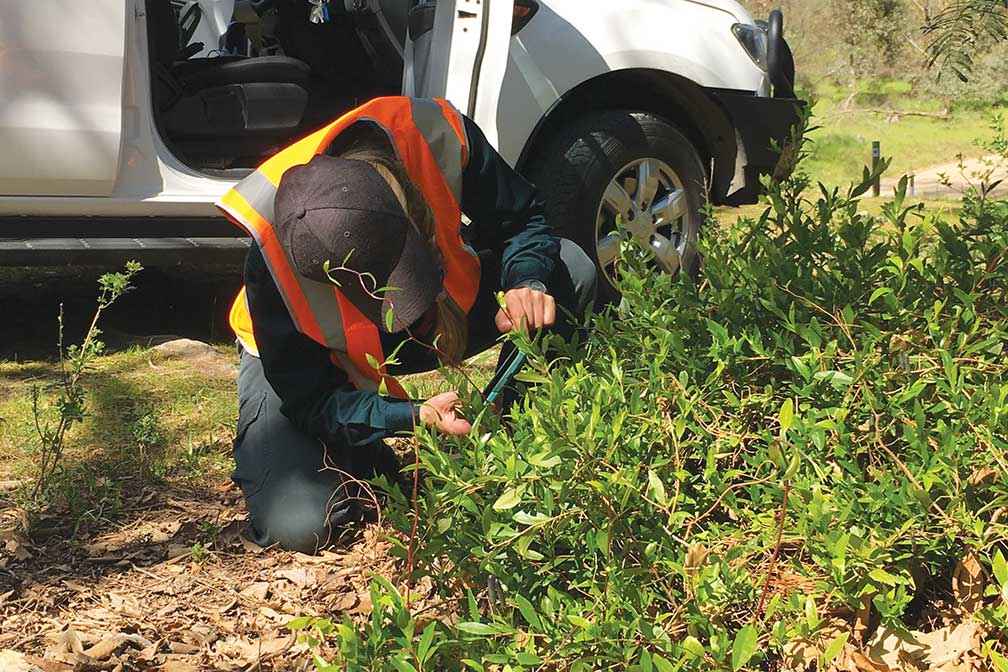Victorian Landcare Magazine - Winter 2022, Issue 84

As a fresh-faced young weed technician with the Department in 1988, I had already started accumulating my 'tools of trade'. I had a bright yellow copy of Costermans native plants, and a highly-prized shiny new copy of Auld and Medd's "Weeds. An illustrated botanical guide to the weeds of Australia".
It wasn't long before I filled a shelf, then a bookcase with these analogue wonders. I have fond memories in my Yarram rental huddled in front of the oil heater spending evenings leafing through their pages identifying the weeds I had photographed with my analogue camera. I practiced often to cement their features and GIST (general impression of size and texture) in the recognition parts of my brain. I can still remember weed names decades later even if I can't remember where I put my glasses 5 minutes ago!
Thirty plus years and here we are in the digital era. With artificial intelligence and machine learning now helping us identify weeds and cameras that fit in our pockets, opening us to a world of knowledge from anywhere connected to a communications tower.
In last winter's issue we reflected on a weed's history influencing their future and how last century we communicated about weeds with technology like fax machines! Technology has come a long way and is improving all the time.
I reflect often on a handout from 'extension' training I did years ago including this quote that resonated with me, "Successful workers consider client needs and recommend appropriate technology rather than the most sophisticated technology" (P.D Mortiss in "Agricultural extension: a practical manual", DPI, Qld).

Above: Identifying environmental weeds in the field using iNaturalist.
The funny thing about technology nowadays is that the interface with the user is increasingly simple while the behind-the-scenes technology can be incredibly complicated. While some of us might need our five-year old grandchildren to program out televisions, it is pretty straight forward to access and use applications (apps) on our mobile devices. App development is a rapidly growing area so look for more than are listed here.
Below are a variety of online tools that can be used to publicise, plan, communicate and report on weed projects. They are also for learning about weeds, an integral part of any planning process, and opportunities to share your information to help others.
Whether you use a desktop computer, tablet or mobile device you will find some useful tools in the links below. My professional focus is on environmental rather than agricultural weeds, however, many of the links are relevant to both. Apps can assist with field data collection, mapping and identification. Try searching the app store using 'invasive species' and 'weeds' and note some apps have a fee to download.
Social media is a great place to explore and share weed information. There are many people and groups on various platforms. When our weed team is out in the field needing help to ID a weed, a post to Facebook or Twitter can result in an expert ID within an hour.
Tip: Try search terms and hashtags such as #InvasiveSpecies #EarlyInvaderWeeds #InvasivePlants #weeds (be prepared for drug related material) #WeedID #PlantID.
Try:
For those still more comfortable with a hard-copy book, here are a few options:
A heads-up that when using 'weeds' and 'internet' in the same sentence. A new world of unexpected and perhaps unwanted web content can appear before your eyes!
Kate Blood is Program Manager – Weed Management at DELWP.
This article was written with assistance from Kate’s colleagues Bianca Gold and Bec James.
For more information call the DELWP Customer Service Centre on 136 186 and follow Kate on social media @weedyk8